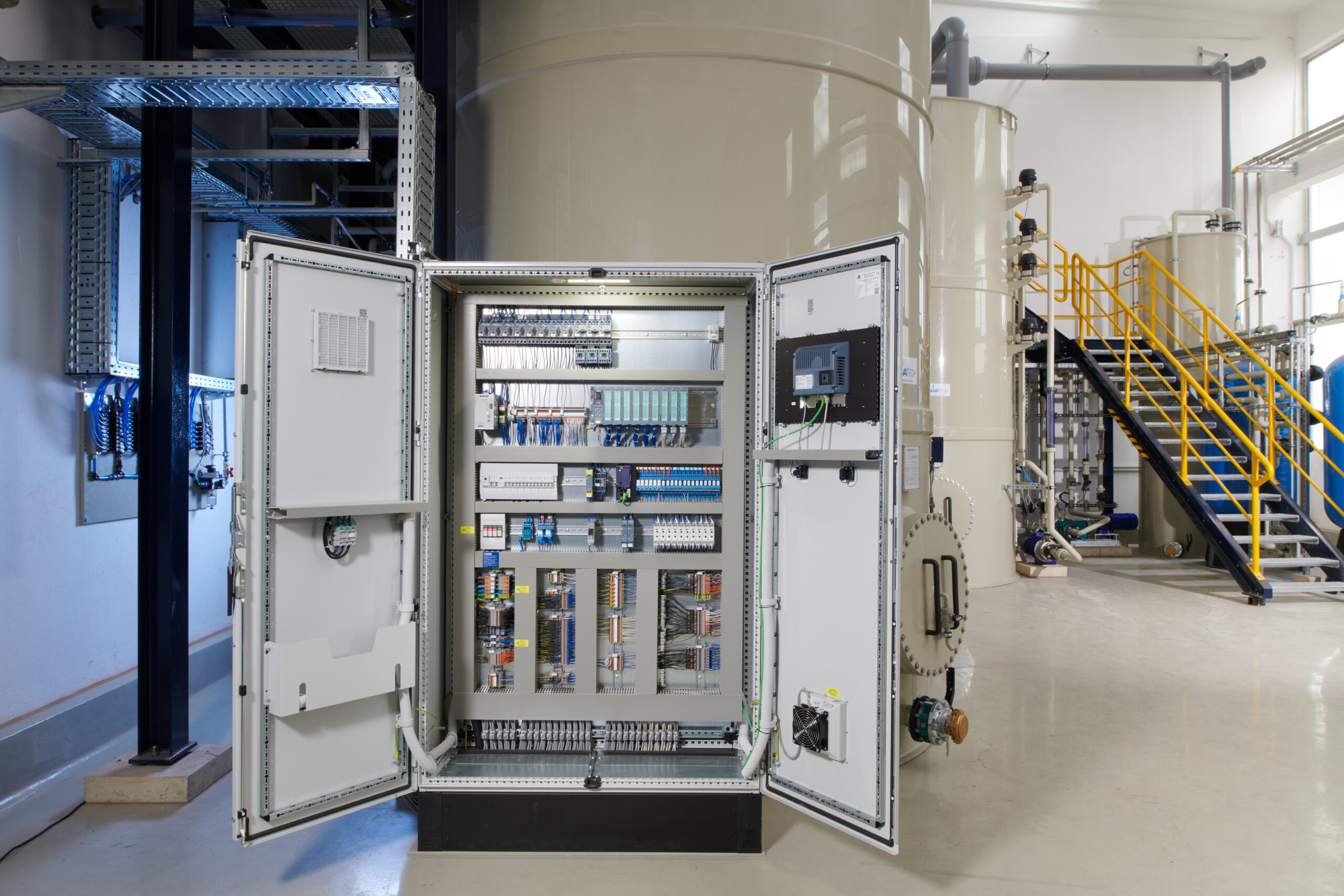Modbus is a globally recognized communication protocol that is widely used in automation technology, particularly in industrial water and wastewater treatment. It was developed in 1979 by Modicon (now Schneider Electric) and enables communication between controllers, sensors, actuators and other devices in an automation system. Thanks to its simple structure and high compatibility, Modbus is considered the standard protocol for networking system components and plays a crucial role in the monitoring and control of water treatment processes.
This article describes in detail the technical basics, the structure of the protocol, the different variants and the practical applications of Modbus in water and wastewater technology.
Table of contents
What is Modbus?
Definition:
Modbus is a serial communication protocol developed specifically for the control and monitoring of industrial processes. It serves as an interface to exchange data between master and slave devices and is used in a variety of applications, including the monitoring of pumps, flow meters, valves and chemical dosing systems.
Special features:
- Open standard: Modbus is license-free and manufacturer-independent.
- Simplicity: Easy to implement and use.
- Versatility: Supports various physical communication interfaces such as RS-232, RS-485 and TCP/IP.
Modbus variants
Modbus exists in different variants that have been developed for different communication requirements:
1. Modbus RTU (Remote Terminal Unit)
- Transmission: Serial communication via RS-485 or RS-232.
- Data format: Binary transmission, very efficient at low bandwidths.
- Advantages:
- High reliability and data integrity.
- Ideal for decentralized systems with several devices.
- Application:
- Connections between sensors and control systems in wastewater treatment plants.
- Monitoring of chemical dosing stations.
2. modbus ASCII
- Transmission: Serial communication with ASCII formatting.
- Data format: Human readable, but less efficient than RTU.
- Advantages:
- Easier troubleshooting and debugging thanks to readable data.
- Application:
- Use in older systems or with smaller data volumes.
3. Modbus TCP (Transmission Control Protocol)
- Transmission: Ethernet-based communication via IP networks.
- Data format: Packet-based transmission, enables high speed and easy integration into existing networks.
- Advantages:
- Seamless integration into modern control systems.
- Allows remote access and central control.
- Application:
- Real-time monitoring of water treatment plants.
- Integration into IoT and SCADA systems.
Technical basics
1. communication topology
Modbus is based on a master-slave model in which a master device (e.g. a PLC or a control system) communicates with several slave devices (e.g. sensors, actuators). The master initiates all requests, while the slaves only respond when prompted.
- Simple bus: All devices are connected via a common cable.
- RS-485: Supports up to 32 devices on one line and enables greater distances.
2. data structure
Modbus uses a standardized protocol to organize and transfer data:
Register types:
- Coils (switching states): Binary values (0 or 1) for controlling and querying digital devices.
- Discrete inputs: Only readable binary states.
- Holding registers: 16-bit registers for parameters or measured values.
- Input Registers: Read-only 16-bit registers.
Message structure:
- Address: Identifies the target device.
- Function: Specifies which action is to be executed (read, write).
- Data: Transmitted values or commands.
- Error check: Ensuring data integrity, e.g. through CRC (Cyclic Redundancy Check).
Modbus applications in water and wastewater technology
1. monitoring and control
- Pumps: Modbus enables the monitoring of operating parameters such as pressure, flow rate, speed and temperature.
- Valves: Status and position monitoring and control of control and shut-off valves.
- Sensors: Integration of pH, conductivity and turbidity sensors in control systems.

Photo: One of our control cabinets with Modbus interface
2. process optimization
- SCADA systems: Modbus is used for data transmission between local controllers and central control stations in order to analyze process data in real time.
- Energy efficiency: Monitoring the energy consumption of pumps and motors to identify optimization potential.
Advantages of Modbus
Flexibility:
Modbus can be used with a wide range of devices and systems, which facilitates integration into existing systems.Cost savings:
As Modbus is an open standard, there are no license costs and there is a large selection of compatible devices.Reliability:
The CRC error check and the simple structure of the protocol ensure a high level of data integrity.Simple implementation:
Modbus is easy to understand and can be quickly integrated into control systems.
Challenges and solutions
1. limited speed with RTU:
Modbus RTU is often too slow for modern applications with high data volumes.
- Solution: Use of Modbus TCP for faster Ethernet-based communication.
2. limited number of devices for serial communication:
RS-485 supports a maximum of 32 devices per line.
- Solution: Use of gateways or segmentation of the network.
3. lack of encryption:
Modbus RTU and ASCII do not offer an integrated security function.
- Solution: Use additional security measures such as VPNs or Modbus Secure.
Conclusion
Modbus is a versatile and proven communication protocol that is indispensable in industrial water and wastewater technology. It enables the reliable integration and monitoring of control systems, sensors and actuators in a standardized network. Thanks to its flexibility and simple implementation, Modbus remains an important component of modern automation systems, even in an increasingly digitalized and networked industry.
For further information on our products, please feel free to contact us at any time!








